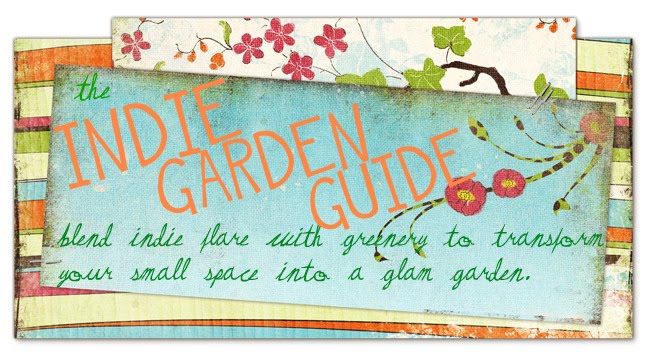Hey everyone! I've been MIA- I know... but I am **SO** happy to see that through Blotanical, my blog has really bloomed while I have been away, busy with school for the past few weeks. Really though, visiting the site for the first time and seeing the Indie Garden Guide on the list of 100 new blogs was pretty neat. So, it's very nice to meet all of you who are visiting through Blotanical! :)
---------------------
Many people already know the benefits of composting, but just don't know where to start. That's where I come in! I have been compost container shopping for weeks now, and I'm now ready!
You can start with pretty much any air-tight container. Now's the time to lug out that rubbermaid container that you have in the closet that isn't used because it's missing a lid. (Or is that just me that has those empty things hidden away?) This storage container can be any size, but you will yield more benefits and get rid of more scraps if you use a larger one. I reccommend 'making' your own compost container, because buying a fancy-shmancy one can be around $200... yikes!
So start with your bin, and drill some holes into it for airflow. The holes shouldn't be big enough so that some of your soil or matter will fall out. You don't even really need a lid! (But if you're worried about stinking up your patio.... feel free to use one.)
Next, scout out anything in your kitchen that could become your kitchen compost keeper. This will be the little guy that holds your scraps until you move them to the composting bin. Things like coffee and oatmeal containers are perfect for this. This will allow some of your kitchen matter to break down and make it easier to control your layers. {We'll talk about layers further down :) }
Now that your compost bin and kitchen keeper are complete.... the fun begins! Below are some things that are great for composting!
Be sure and shred paper into small strips and to chop veggies and fruits into small pieces to help them decompose faster. Depending on how often you have veggie scraps, this is where your kitchen keeper comes in. Add those slices of carrots, celery strips, strawberry tops- all of it - into your keeper as you produce it. Then when you have enough for a "green" layer, throw it out in your compost bin. What's this "green" layer, you may ask? -- The key with composting is to alternate your "greens" and "browns". So, start with a layer of dead leaves, coffee grounds and saw dust, and then layer on your fruit and veggie scraps. (Incorporating the browns into your compost will keep the smell of composting under control.) If your compost is too wet, increase your "browns", if it is to dry, spray some water on top to help the process.
Your compost is ready to "harvest" when it has a nice layer of organic matter at the bottom. This layer will be very dark, moist dirt-like matter. It will do wonders for your garden!
With all of this as a guideline, your possibilities are literally endless. Also, you will be amazed at how much less trash you will have in your trashcan!


Have you ever tried worm composting? It's really easy and the worms create a lot of compost in a short time.
ReplyDeleteYes, I have tried worm composting! We tried it over at Natural Springs Garden last year. We also wanted to create Worm Tea for fertilizer! However, our worms died. :( Later, when I was researching composting I read that it is sometimes hard for worms (we used red wigglers) to survive in high-humidity areas...like here in Houston, where we are at 100% humidity! Worm composting is very beneficial and is another perfect option for apartment dwellers who want to compost, and the "Worm Tea" is an AMAZING option for organic fertilizing. Thanks for sharing!
ReplyDelete